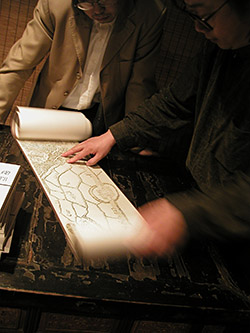Authenticity and connoisseurship
 | |
Concern over authenticity is often a barrier to new collecting of literati art. In some ways the situation resembles that in Europe in the late 19th or early 20th century prior to the maturation of museums and before the expansion of the art history profession. In this section, we provide an overview of this problem and related issues of connoisseurship. And we attempt to estimate the number and character of paintings that may yet be available to collectors in the private market.
Compared to a decade ago there is probably less consensus now about the quality and authorship of any particular Ming-Qing literati painting.
This has arisen due to a number of factors:
- The retirement or passing of 'authority figures' in the field whose judgments were generally trusted (i.e. auction house experts, well-known collectors, and a handful of academics and museum curators). Largely acting as connoisseurs, they based their judgements on extensive visual experience, word of mouth knowledge from earlier experts, and stylistic as well as evidential analysis. In recent years some of their assessments have also been shown to be doubtful in the face of subsequent material or historical evidence.
- The new generation of experts are cautious in their claims and favour evidence-based approaches. Uncomfortable to act as connoisseurs, they are less willing to accept stylistic analysis as the sole means of establishing authenticity. In consequence, they are less inclined to offer un-researched comments in respect to 'unknown' works that appear in the market.
- A 'Western' approach to authenticity - where authorship is more or less a black and white affair - has increasingly replaced traditional Chinese approaches where authorship was treated as a matter of probability. Chinese formerly understood that the practice of any famous painter was also mixed with a wider body of work produced by students and followers of varying skill. Rather than focus on untangling these relations and problems of attribution, traditional approaches were more concerned with quality of painting per se. Qualitative assessment occurred in the accretion of comments by successive experts who inscribed a painting or recorded it in catalogues.
- The growth of the market has exacerbated these issues, with a great increase in quantity, bringing out many pieces that have not previously been recorded or commented on. In addition, a part of the market is operated by players who are not completely professional.
- Page 1
- 2



